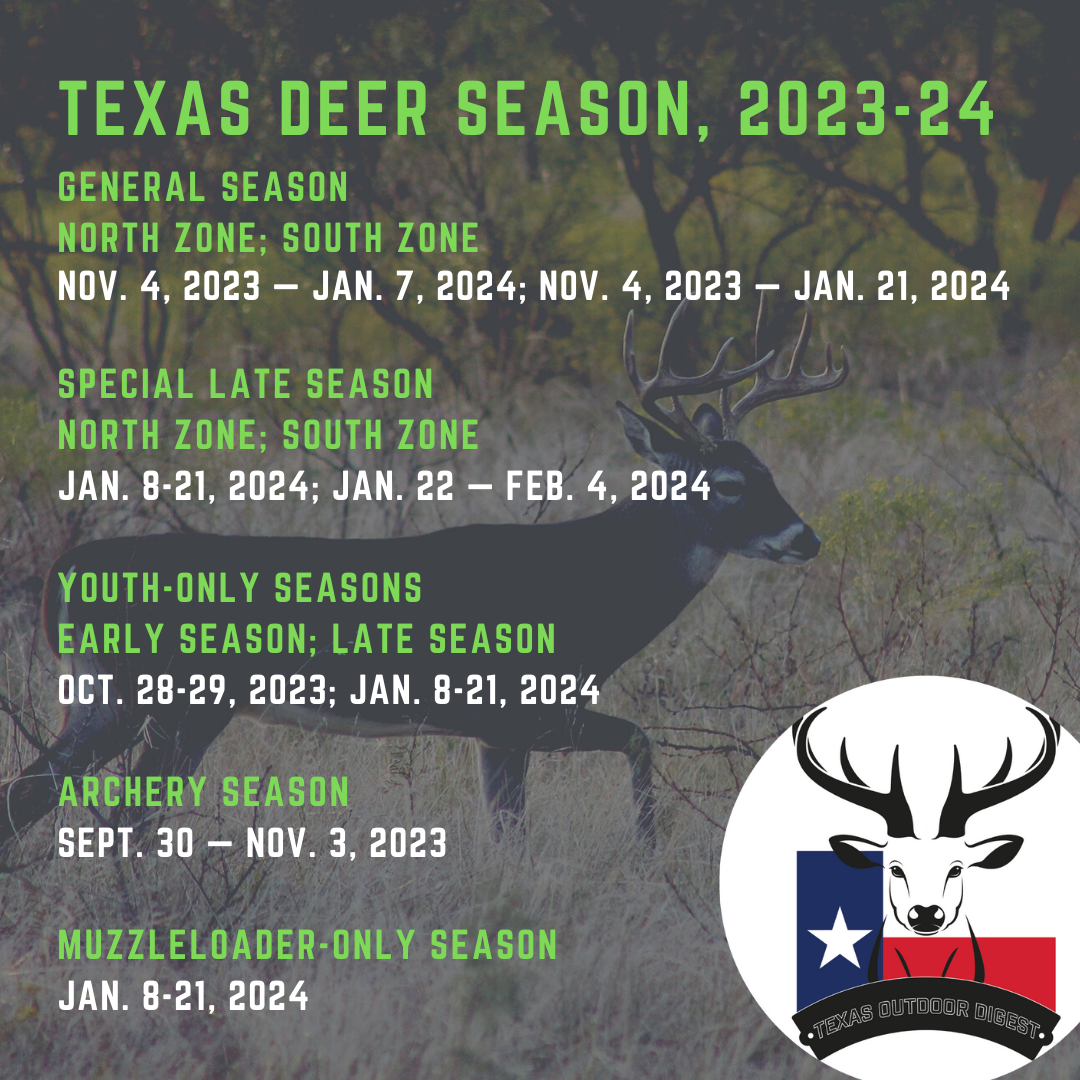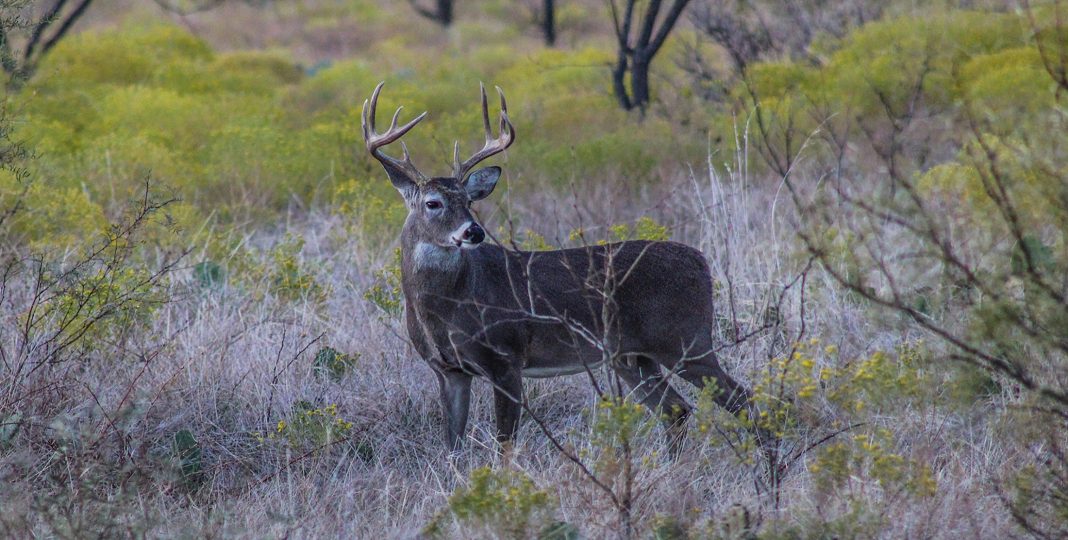
Texas archery deer season officially kicks off Sept. 30, 2023, and the whitetail outlook is about as good as it’s ever been, especially in hunting hot beds including the Hill Country and South Texas.
Bowhunting has never been more popular, with the pursuit taking the mainstream outdoors world by storm and making big-time celebrities out of those men and women adept at harvesting bone and backstraps with stick and string.
It sure seems like everyone who’s anyone in the outdoor space is bowhunting, which is a good thing for helping introduce more folks to the pursuit and to hunting in general, especially here in Texas where archery hunters get a head start on rifle hunters every whitetail season. With so many outdoorsmen and outdoorswomen taking up the archery experience for the first time, it’s vital to highlight the numerous safety angles that should be considered each and every time you spend time outdoors with bow in hand (or crossbow now that you’re able to use them during earlier deer frameworks here in the Lone Star State except for a handful of counties north of the Metroplex).
And while accidents and injuries sometimes do occur to hunters using razor-sharp broadheads and gear capable of storing loads of kinetic energy, there’s one common thread to the most frequent hunting-related incidents each year: Falls from elevated positions, which also can affect Texas rifle hunters ascending and descending tall stands of various makes and models.
The Texas Parks and Wildlife Department keeps detailed reports of all hunting-related fatal and non-fatal incidents dating back to 1966, providing clear insight into the nature of accidents involving outdoorsmen and outdoorswomen pursuing game ranging from deer and doves to hogs and ducks. TPWD logged more than 1.2 million hunting license sales last year with 15 overall hunting accidents documented, including a single fatal one. That translates to a hunting accident rate of 1.2 per 100,000 licenses sold, which is still among the lowest figures TPWD has ever documented.
Mandatory hunter education — in effect since 1988 in the Lone Star State — has been the most important factor in the overall reduction of hunting accidents.
Texas hunting accident deaths center on improper handling of firearms
In addition to hunting accidents involving the discharge of either a firearm or a bow, TPWD also documents incidents that don’t revolve around weapons, especially falls, which increased last year. The most common of those accidents were falls from elevated stands that led to documented injuries for a number of hunters. Falls from elevated positions while hunting are the No. 1 hunting accident in North America, TPWD notes, and there undoubtedly are many accidents each fall and winter involving climbing into a deer stand that don’t get documented by the state agency.
While improved safety gear has helped ensure fewer accidents, studies have shown that roughly 1 in 3 to 1 in 4 archery hunters will suffer a fall at some time during their excursions when either ascending or descending a stand, according to TPWD.
With that in mind, here is a glimpse at bowhunting safety centering on hunting from tree stands and elevated positions, though many of these points can be applied to varying hunting situations for a number of game species:
- Wear a full-body harness, also known as a fall arrest system, when you are in a tree stand, as well as when climbing into or out of a tree stand. Make sure it is worn properly. Tree stand harnesses have an expiration date and should be replaced when they expire and/or if a fall occurs.
- A safety strap should be attached to the tree to prevent falling more than a foot.
- Always inspect the safety harness for signs of wear or damage before each use.
- Follow the three-point rule of tree stand safety. Always have three points of contact to the steps or ladder before moving. Be cautious that rain, frost, ice or snow can cause steps to become slippery. Check the security of a step before placing your weight on it.
- Always hunt with a plan and, if possible, a buddy. Before you leave home, let others know your hunting location, when you plan to return and who is with you.
- Carry emergency signal devices such as a cellphone, walkie-talkie, whistle, signal flare, personal locator device and flashlight on your person and within reach even while you are suspended. Watch for changing weather conditions. In the event of an accident, remain calm and seek help immediately.
- Always select the proper tree for use with your tree stand. Select a live straight tree that fits within the size limits recommended in your tree stand’s instructions. Do not climb or place a tree stand against a leaning tree.
- Always use a haul line to pull up gear and unloaded firearm or bow to your tree stand once you have reached your desired hunting height. Never climb with anything in your hands or on your back. Prior to descending, lower your equipment on the opposite side of the tree.
- Be aware of suspension trauma. A rear attached full-body harness is intended to prevent falls, not to be suspended in. Suspension trauma can happen in less than 20 minutes and can be fatal. Hunters should attach an additional foot strap to the body harness to take the pressure off their upper legs and carry a pocket knife to cut away the harness if a situation turns critical.
Don’t fall victim to becoming a hunting accident statistic
Here are some recent excerpts from some non-fatal accidents documented by the Texas Parks and Wildlife Department, which highlight the key aspect involved in most bowhunting-related accidents, as well as some firearm-related ones:
- Deer bowhunter was climbing out of stand 18 ft high when a branch he was holding snapped. He suffered punctured spleen, broken wrist, and bruised ribs. He was not wearing a safety harness nor using a haul line. Victim had taken hunter education.
- Victim was not wearing a safety harness and fell from tree stand. His foot got hung up in the stand, and he hung upside down for two hours until help arrived. He did not have HE Certification.
- Victim slipped while descending the ladder of her 8-foot box elevated stand. She carried her rifle down with her, holding the railing with her rifle hand. She slipped and fractured her pelvis in two places because of the fall.
- Victim slipped and fell off a 6-ft. ground blind while waiting for his hunting companion to pick him up. He suffered a broken leg and cut near his eye.
- Victim slipped and fell 15 feet after installing a tree stand and attempting to sit in the seat attachment without a harness or climbing system attached to himself.
- Victim lowered his rifle from a tree stand using a haul line then descended using a climbing-style tree stand. He had not secured the safety pin to the climber cable prior to descending and was not wearing a harness. He fell 15 feet when the cable dislodged and suffered major injuries to his vertebrae and ribs.
- While descending from a tripod-style elevated stand, victim fell and hooked his leg on the lower rung of the ladder causing injury to his calf and thigh. He had placed his bow on the platform prior to descending so he was hands-free on the way down.
2023-24 Texas Deer Seasons
General Season
North Zone; South Zone
Nov. 4, 2023 — Jan. 7, 2024; Nov. 4, 2023 — Jan. 21, 2024
Special Late Season
North Zone; South Zone
Jan. 8-21, 2024; Jan. 22 — Feb. 4, 2024
Youth-Only Seasons
Early Season; Late Season
Oct. 28-29, 2023; Jan. 8-21, 2024
Archery Season
Sept. 30 — Nov. 3, 2023
Muzzleloader-Only Season
Jan. 8-21, 2024
Correctly sizing up deer, antelope adds to Texas hunting experiences




















